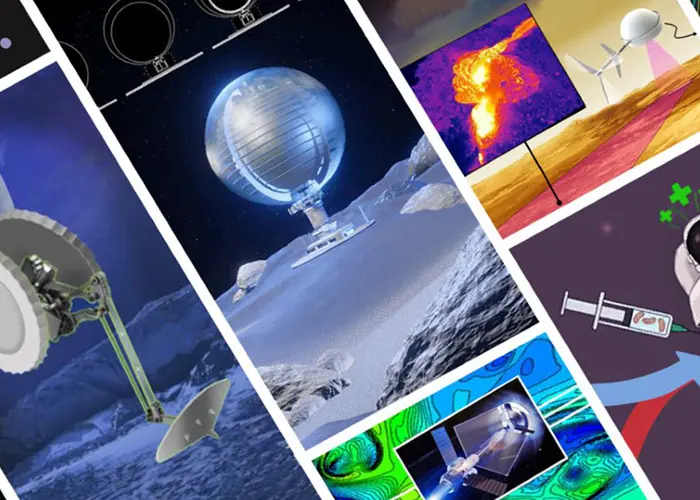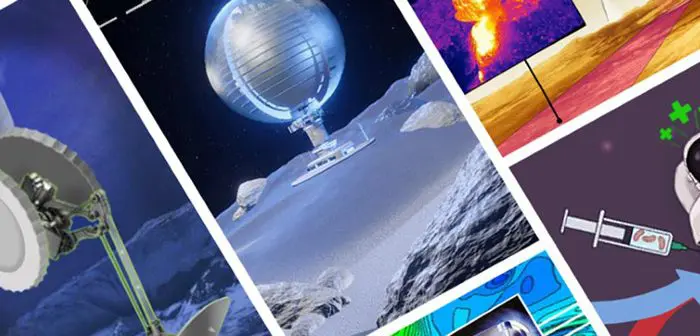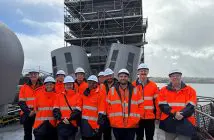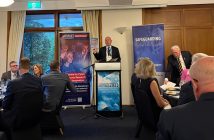
NASA has selected 15 ideas for its NIAC (NASA Innovative Advanced Concepts) program, which develops concepts to transform future space missions. Chosen from companies and institutions across the United States, the 2025 Phase I awardees represent various aerospace concepts.
The NIAC program nurtures innovation by funding early-stage technology concept studies for future consideration and potential commercialisation. The combined award for the 2025 concepts is a maximum of USD2.625 million in grants to evaluate technologies that could enable future aerospace missions.
“Our next steps and giant leaps rely on innovation, and the concepts born from NIAC can radically change how we explore deep space, work in low Earth orbit, and protect our home planet,” said NASA Associate Administrator Clayton Turner. “From developing small robots that could swim through the oceans of other worlds to growing space habitats from fungi, this program continues to change the possible.”
The newly selected concepts include feasibility studies to explore the Sun’s influence on our solar system, build sustainable lunar habitats from glass, explore Saturn’s icy moon, and more. All NIAC studies are in the early stages of conceptual development and are not considered official NASA missions.
Ryan Weed from Helicity Space proposes a constellation of spacecraft powered by the Helicity Drive, a compact and scalable fusion propulsion system that could enable rapid, multi-directional exploration of the heliosphere and beyond. It would provide unprecedented insights on how the Sun interacts with our solar system and interstellar space. Demonstrating the feasibility of fusion propulsion could also benefit deep space exploration, including crewed missions to Mars.
Martin Bermudez from Skyeports presents the concept of constructing a large-scale, lunar glass habitat in a low-gravity environment. Nicknamed LUNGS (Lunar Glass Structure), this approach involves melting lunar glass compounds to create a large spherical shell structure. This idea offers a promising solution for establishing self-sustaining, large-scale habitats on the lunar surface.
Justin Yim from the University of Illinois proposes a jumping robot named LEAP (Legged Exploration Across the Plume) as a novel robotic sampling concept to explore Enceladus, a small, icy moon of Saturn covered in geysers, or jets. The LEAP robots could enable collection of pristine, ocean-derived material directly from Enceladus’s jets and measurement of particle properties across multiple jets by traveling from one to another.
The NIAC researchers, known as fellows, will investigate the fundamental premise of their concepts, identify potential challenges, and look for opportunities to bring these concepts to life. In addition to the projects mentioned above, the following selectees received 2025 NIAC Phase I grants:
- Michael Hecht from Massachusetts Institute of Technology: EVE (Exploring Venus with Electrolysis);
- Selim Shahriar from Northwestern University: SUPREME-QG: Space-borne Ultra-Precise Measurement of the Equivalence Principle Signature of Quantum Gravity;
- Phillip Ansell from the University of Illinois: Hy2PASS (Hydrogen Hybrid Power for Aviation Sustainable Systems);
- Ryan Benson from ThinkOrbital: Construction Assembly Destination;
- Gyula Greschik from Tentguild Engineering Co: The Ribbon: Structure Free Sail for Solar Polar Observation;
- Marco Quadrell from NASA’s Jet Propulsion Laboratory: PULSAR: Planetary pULSe-tAkeR;
- Ben Hockman from NASA’s Jet Propulsion Laboratory: TOBIAS: Tethered Observatory for Balloon-based Imaging and Atmospheric Sampling;
- Kimberly Weaver from NASA’s Goddard Space Flight Center: Beholding Black Hole Power with the Accretion Explorer Interferometer;
- John Mather from NASA’s Goddard Space Flight Center: Inflatable Starshade for Earthlike Exoplanets;
- Robert Hinshaw from NASA’s Ames Research Center: MitoMars: Targeted Mitochondria Replacement Therapy to Boost Deep Space Endurance;
- Christine Gregg from NASA’s Ames Research Center: Dynamically Stable Large Space Structures via Architected Metamaterials; and
- Saurabh Vilekar from Precision Combustion: Thermo-Photo-Catalysis of Water for Crewed Mars Transit Spacecraft Oxygen Supply.
NASA’s Space Technology Mission Directorate funds the NIAC program, as it is responsible for developing the agency’s new cross-cutting technologies and capabilities to achieve its current and future missions.





